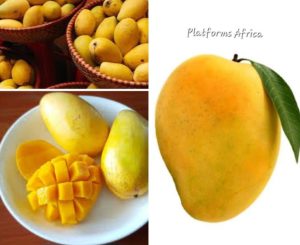It’s mango season in Nigeria, and India, the world’s diabetes capital. High on sugar and calories, most diabetics avoid mangoes. Here is what to know
For high-sugar fruits such as mango or watermelon, a safe portion size is generally about one small slice or half a cup to one cup per serving.
Dr Saptarshi Bhattacharya, senior consultant, endocrinology, Indraprastha Apollo Hospitals, says: “Diabetics can eat mangoes, but moderation and portion control are crucial. Mangoes are high in natural sugars, which means they can raise blood sugar levels if consumed excessively. However, mangoes also have fibre, antioxidants, and a low glycemic index (GI of 51), so they do not cause dramatic spikes in blood sugar for most people.
To safely include mangoes in a diabetic diet, it’s important to monitor your personal blood sugar response and avoid eating large quantities or consuming them late at night. Pairing mango with protein or healthy fats (like nuts or yoghurt) can also help blunt any potential blood sugar spike.”
Are any fruits completely unsafe for diabetics? What about watermelon?
No fruit is completely unsafe for diabetics, but some are best consumed with caution due to their high sugar content and low fiber—such as mangoes, jackfruit, bananas, chikoo, grapes, and dried fruits like raisins and apricots. Watermelon, while high in natural sugars and with a high GI (around 72-76), is mostly water, so its glycemic load per serving is low.
Between Sugar And Killer; Health Risks, Tips To Save You From Diabetes
Cockroach Milk Four Times More Nutritious Than Cow’s Milk – Study
‘It Has No Nutrition’ — FG To Ban ‘Ponmo’ To Revive Leather Industry
‘Drink 1 Can, Lose 12 Mins,’ How Soft Drinks Reduce Life Expectancy
100 Nigerian Children Die Hourly From Malnutrition – UNICEF
‘One Post, 1.7 Million Views,’ Platforms Africa’s Ratings Soar
Adeola Yusuf: Profile of A Prolific Pen-Pusher
This means that a typical serving (about 1 cup) is unlikely to cause a significant blood sugar spike if eaten in moderation. The key is to avoid large portions and not to combine multiple high-sugar fruits in one sitting. Pairing watermelon with protein or healthy fats (like nuts or seeds) can further slow sugar absorption and help manage blood glucose levels.

For high-sugar fruits such as mango or watermelon, a safe portion size is generally about one small slice or half a cup to one cup per serving.
Consuming one or two slices of mango or a bowl of watermelon is typically considered safe for most diabetics, provided it fits within their overall carbohydrate allowance for the meal. Eating fruit between meals rather than with other high-carb foods can help minimise blood sugar spikes. It’s also important to monitor your own blood sugar response, as individual tolerance can vary. Consult a healthcare provider or dietitian for personalised recommendations.
How can diabetics offset the sugars and calories consumed through a high-sugar fruit?
Diabetics can offset the sugars and calories from high-sugar fruits by pairing them with foods rich in protein, fiber, or healthy fats—such as nuts, seeds, or yoghurt. This combination slows down the absorption of sugar into the bloodstream, reducing the risk of a rapid blood glucose spike. Additionally, adjusting the rest of your meal to reduce other sources of carbohydrates (like rice or bread) on days when you consume high-sugar fruit can help maintain balanced blood sugar levels. Regular physical activity and mindful eating habits, such as not eating fruits late at night, further support glucose control. Monitoring your blood sugar after eating fruit can help you understand your body’s response and adjust your diet accordingly.
Can diabetics consume 100% fruit juices or smoothies?
Diabetics are generally advised to avoid 100% fruit juices and smoothies, even if they contain no added sugar. Juicing or blending fruit removes or breaks down much of the fiber, causing the natural sugars to be absorbed more quickly and leading to rapid spikes in blood sugar. For example, watermelon juice has a higher glycemic index than whole watermelon and is best avoided by diabetics. Eating whole fruits is preferable because the fiber content helps slow sugar absorption. If you do choose to consume a smoothie, ensure it is balanced with protein (like Greek yoghurt) and healthy fats, and limit the portion size. Always check your blood sugar response and consult with a healthcare provider for individualised advice.
Finnacial Express





